With a fresh start I tackled this ridiculously complex and fragile rotor head. I had just played guitar for about a half hour. I'm very out of practice and pledged this weekend that I'm going to start playing again to build up my strength and callouses. I was inspired after seeing an old Austin City Limits show featuring Stevie Ray Vaugh (RIP) at his last appearance in 1989. Why am I telling you all this? Because the exercise and being a little low on blood sugar left me with very shaky hands and I was about to finally assemble the lever bracket assembly I started yesterday.
I have a ton of images today, and a lot of dialog since this was one heckuva session, so strap in... And paraphrasing the words of Obi Wan Kanobi remarking on the Tatooine Cantina, "things could be a little rough"!
After trimming the homemade link a scosh more I was able to get is all together. I ended up drilling more 0.022" holes and pinning the final connection instead of relying on the tiny plastic protrusions. It's now a reasonably stable assembly.

After this, there is a mast base and rotor head plate (don't know what to call all of these sub-parts). Around the mast go a sequence of angular trusses that brace the rotor head. Each is different in their upper connection helping to avoid getting them in the wrong place. They fit nicely and caused no trouble. It lulls you into thinking that this could all go together easily. Wrong!
Here was the first one. I cut each individually off the sprue, cleaned it up and attached it before doing the next, just to keep things tidy.
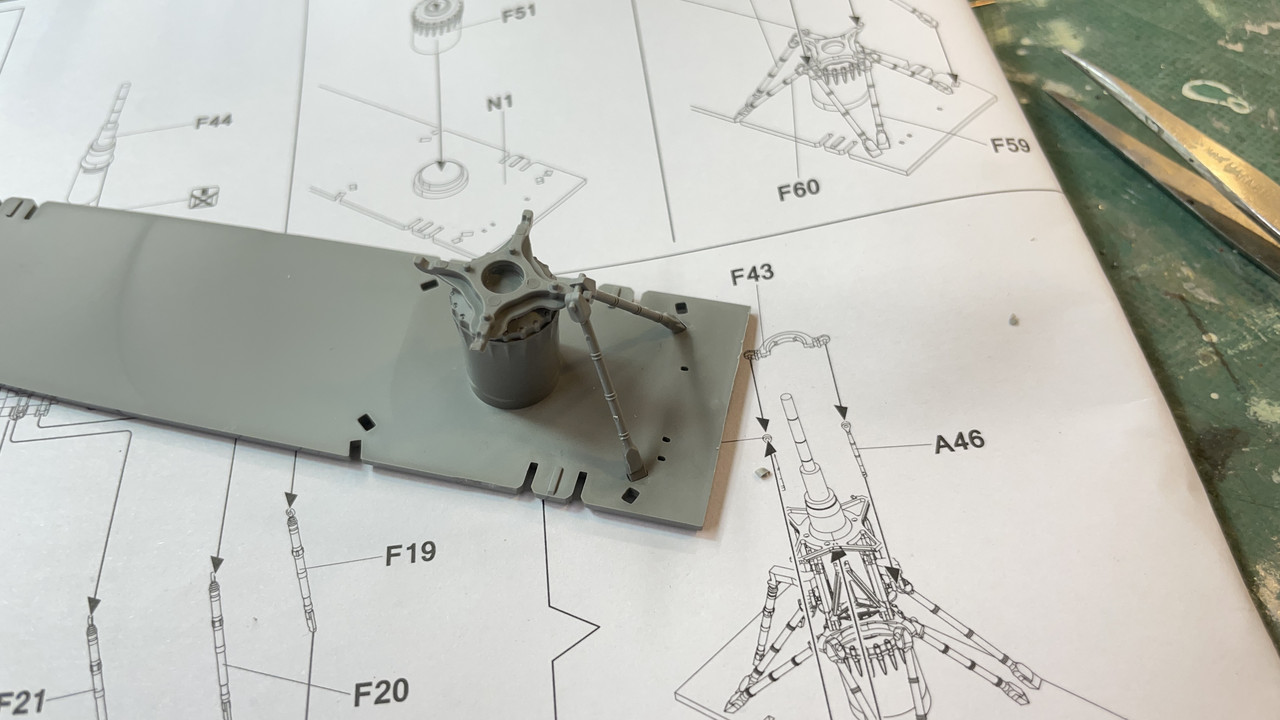
Here's the complete array installed. Note that the upper pin area is different for all four so even if you're confused, if observant, you could figure it out.
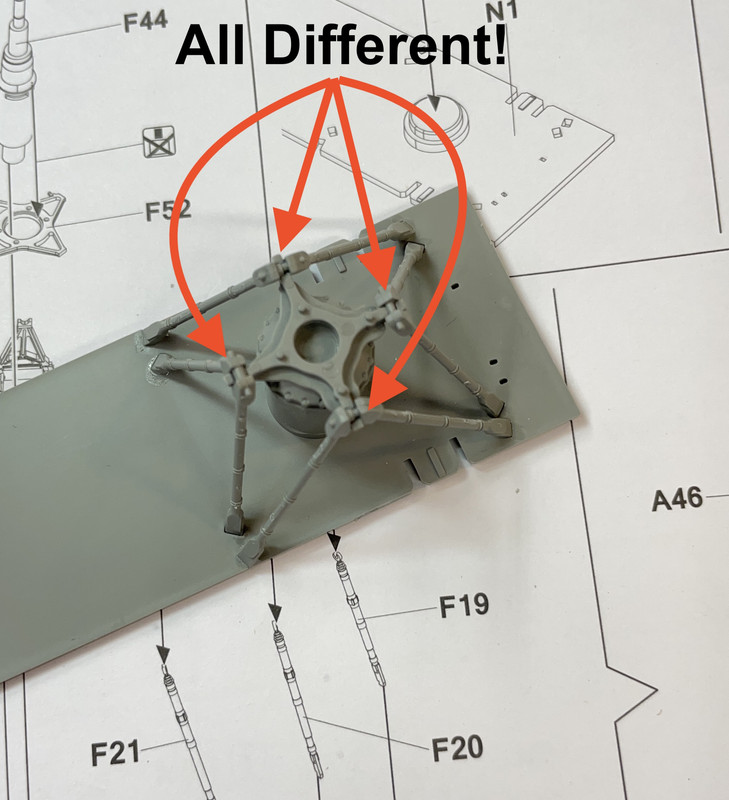
Yesterday's assembly attaches to this with two plastic pins. At first I didn't glue it, not knowing for sure how it would settle in, but later felt it was okay to fasten it since it was moving around too much and not helping at all.
When this was installed the three operating links went in. These were very fragile with the upper clevis end almost being to fine to work. Comparing it to the #11 blade shows the lack of mass quite well.
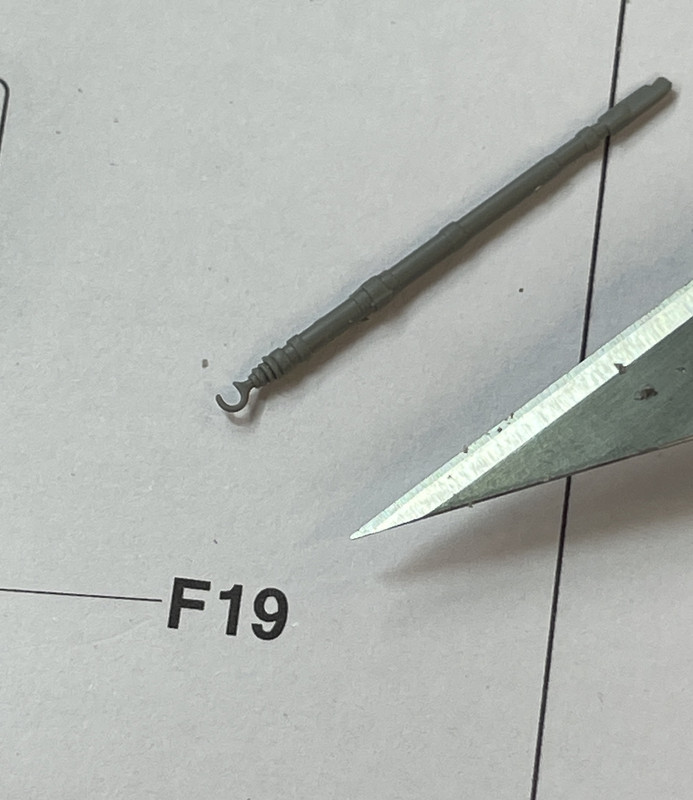
Amazingly, all three links went in without hassle or breakage.
The mast then slipped in between and glued into the base with a key to align it. BEFORE PUTTING IT IN PLACE YOU MUST PUT PART #F52 ONTO THE MAST. This part is supposed to be NOT GLUED. That's a real challenge as you're suppose to install swashplate parts below it and they must be glued.
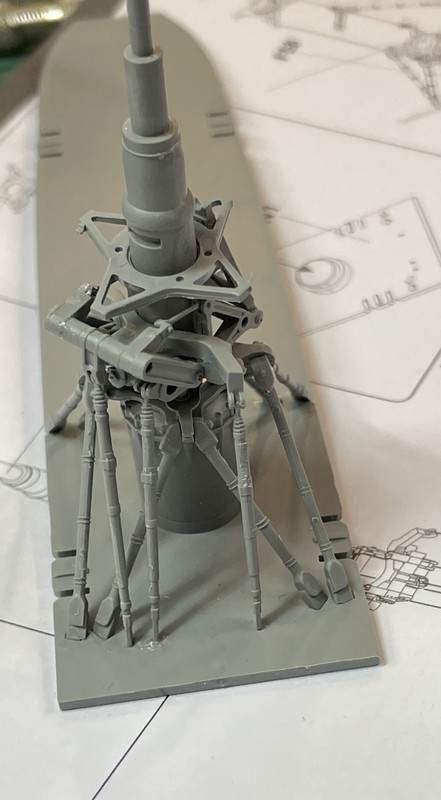
Just underneath the rotating connection plate (possibly for the collective pitch) went a two-part swash plate (term??) with two frail links that tie into the lever assembly installed earlier. The swash plate without the pins goes in first and engages another lever in this assembly. This was a horror, but not the worst horror. You are supposed to glue it in place WITHOUT gluing that collective plate above it. My first attempt with liquid cement did just that...glued it! I was able to spin it enough to break the not-complete-bond and get it moving.
There is a lug on the i.d. of these two shells that is supposed to engage in a similarly shaped slot in the main shaft. They are different sizes so you can't mix up what goes on which side. As I fussed with getting the rest of this in place, it kept breaking loose... over and over and over...

Then came the real horror show. The last one was just a "coming attraction". In addition to putting the second shell in place into its rectangular slot, you must also captivate two tiny connecting links.
Attempt #1: I glued the two links into the pins on the non-attached shell and tried to manipulate it into position while catching the lower end of these links into another clevis on the lever mechansim. Not only didn't it work, knocking the previously installed shell off, but it ended up breaking one of the links in half. I then crafted a replacement matching the length and design of the two ends: one enclosed and one with an open slot.
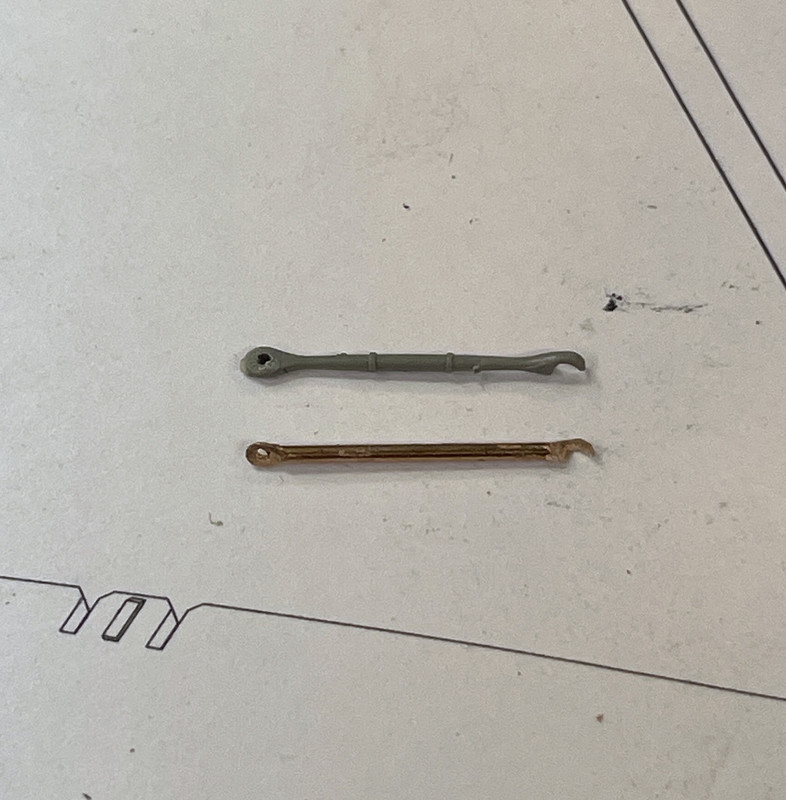
Attempt #2: Same scenario except this time one plastic and one metal link fell off.
Attempt #3: Plastic link #2 gave out. Getting a bit scary now, isn't it?
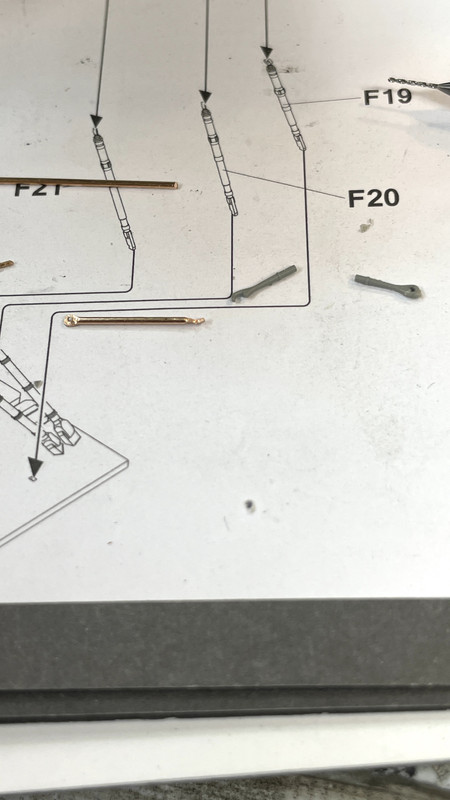
With my vast experience making metallic links, I quickly crafted another the same length as the first one.
I then made a couple of changes so I wasn't doing the same thing over and over again expecting a different outcome. Hey! I'm obsessed! I'm not crazy!
I also removed the rectangular lug on the one shell that I was having trouble installing since the lug was not fully entering the mating slot and was preventing the two shells from meeting properly.

Here's the slot that wasn't working.

Problem solved! This shows the short pins which I subsequently abandoned.
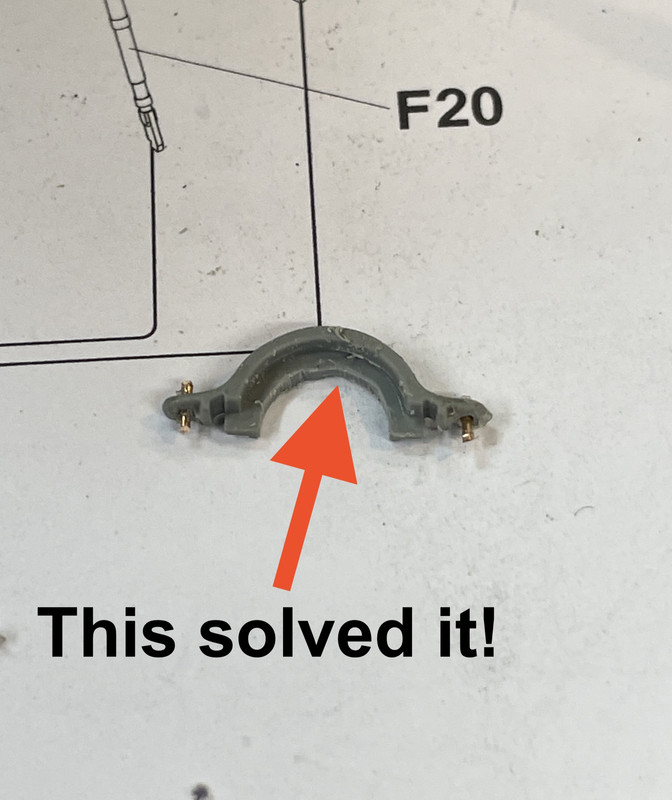
I also realized that attempting to hang the links on those tiny plastic pins and expecting it all to hold together as I kept manipulating the parts simply wasn't woring. I drilled the plastic pins out of the one shell and fully drilled out the dimple ont the other. I originally cut the metallic pins correct length, but this was just as hard to assemble as with the plastic pins. I wised up and used long pieces of 0.022" phos-bronze that I could thread through both shells and then guide them together.
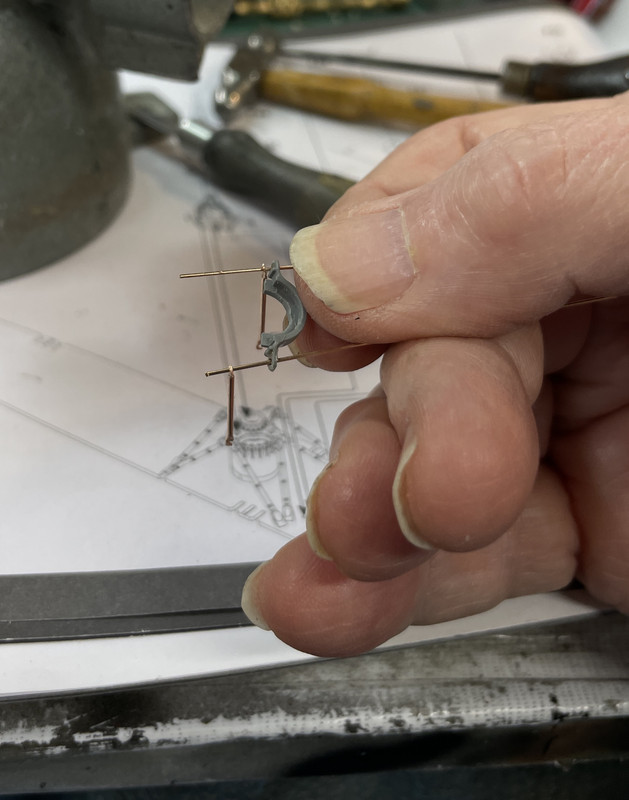
Once I got all these mods in operation, I was finally able to bring all the parts together. I brought then into engagement gradually, making sure that the links were engaging their correct clevises in the lever block.
Once I got the two halves positioned, I was able to swing the links up into engagement without worrying about all the parts falling into my parts catcher.
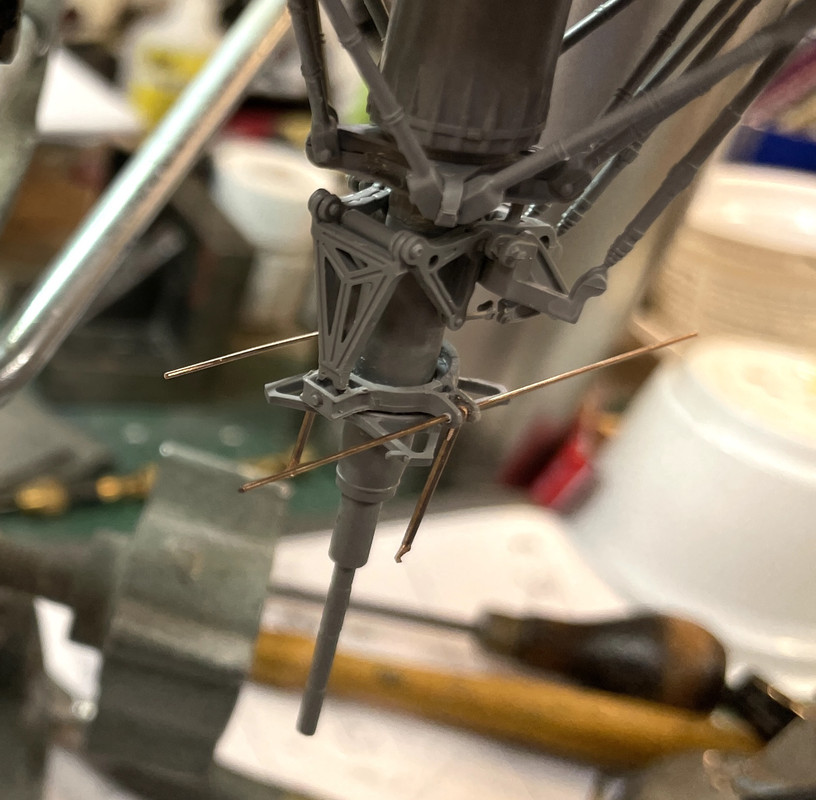
Here's the reverse view showing the lnks into their respective locations. You really have to master the skill of drilling tiny holes in akward places to do this work. BTW: my hands steadied out after a snack and some Gummi Bears.
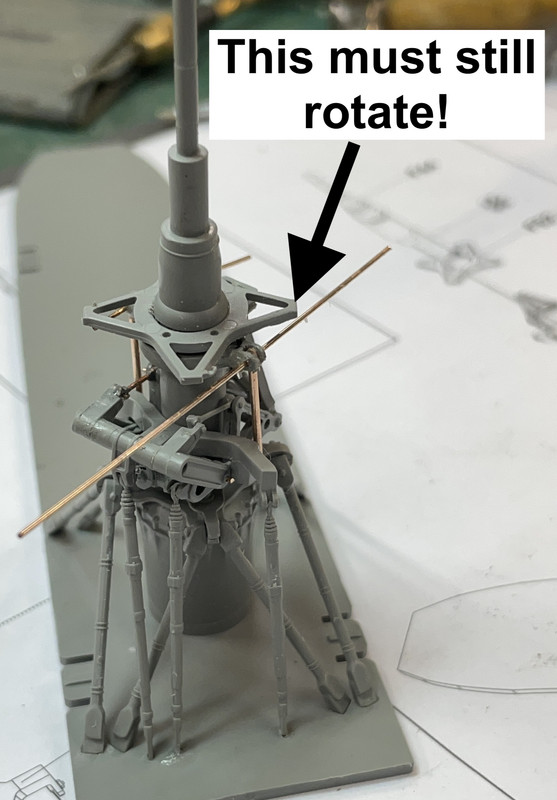
And here's the fully assembled lower control end of the main mast. There's another crisis waiting around the corner. That upper rotating part has two little ears with slots to receive other links. Both of these ears have one half broken away and will need to be replaced. I believe I can either form it with Bondic UV curing resin or make it out of PE fret material. Either way, I'll get it fixed.
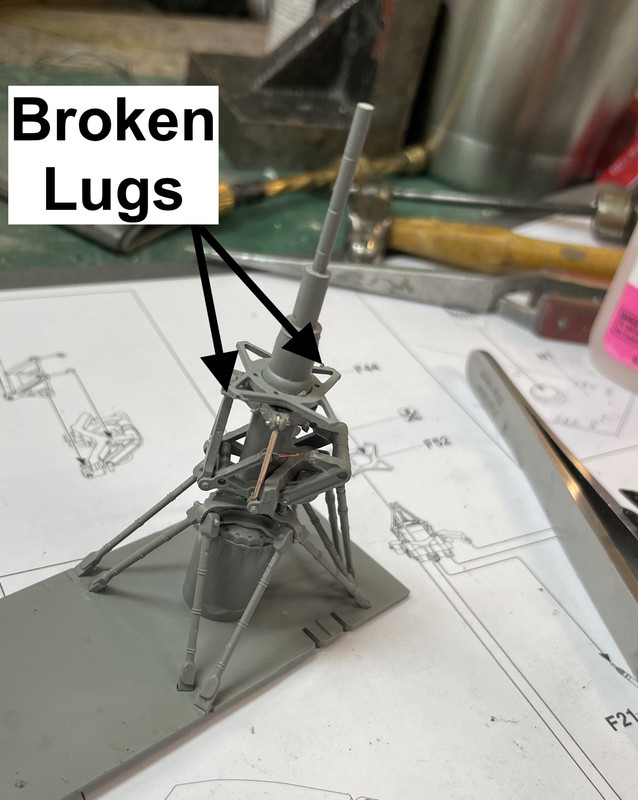
That last bit took well over an hour to resolve. I can see why some folks are just leaving all this stuff off the model since it's out of the sight line. I also can imagine that a lot of modelers just don't have the experience making these small jewelery-like parts. If I had it my way, I'd replace all the plastic links with metal. I believe when Neil on videos got to this step, he wrestled with it all off camera. Granted, my metal links are a bit simpler in design than the kit's, but when painted, no one will notice. I had to do this a lot of the Seahawk too for the same reason. If I had a swiss-type lathe that can turn tiny long parts, I'd machine them all.
I think this assembly has reached the point where it can be painted. I believe it can be painted all NATO black. Part of the main shaft is polished steel, I will try and use Bare Metal Foil for this part. When you look at the mechanical complexity of a helicopter you wonder how they ever fly at all...
The color looks pretty dark. Anyone have accurate data on the rotating parts color? In this image it looks awfully like Olive Drab... Also note the polished portion and shiny ends of fasteners and link bearings.
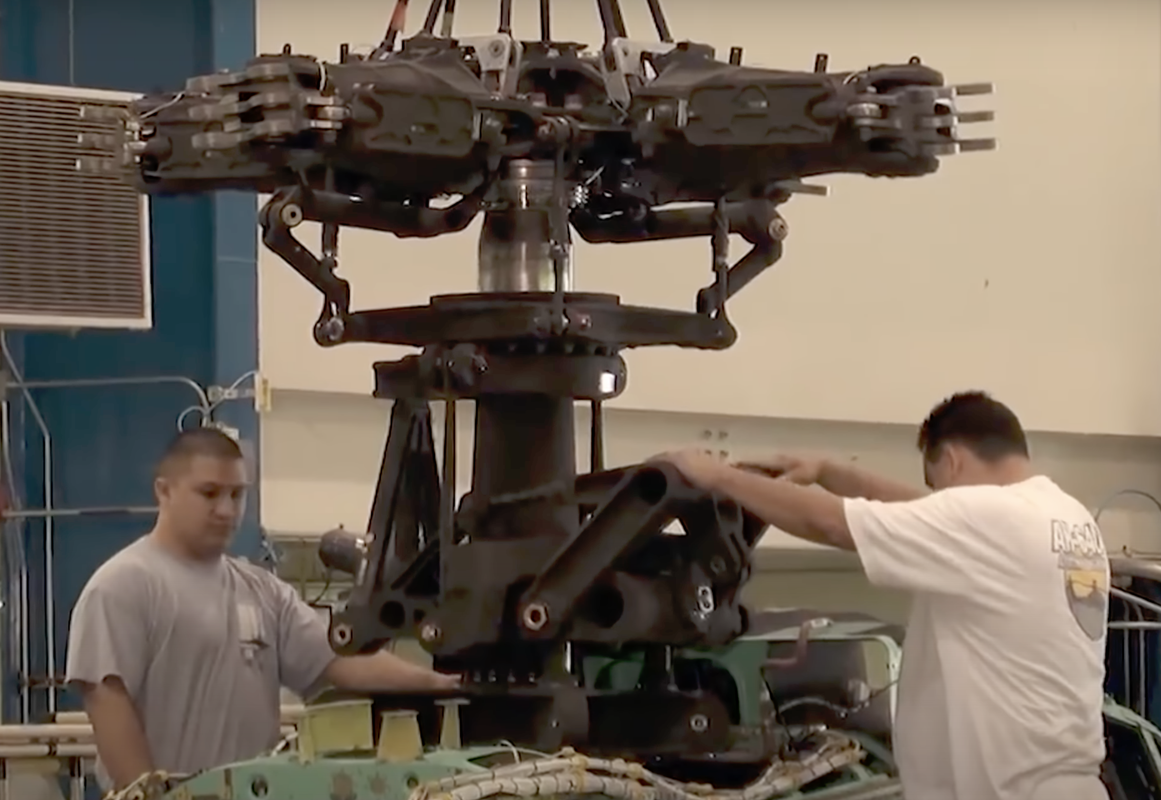
I'm glad this part is over. It was truly a challenge!